Why Servo Motor Sizing is Important?
The importance of servo motor sizing should not be underestimated. Proper motor sizing will not only result in significant cost savings by saving energy, reducing purchasing and operating costs, reducing downtime, etc.; it also helps the engineer to design better motion control systems.
Importance of Servo Motor Sizing
The servo motor represents the most influential cost factor in the motion control system design, not only during the purchasing process, but especially during operation. A high-torque motor will require a stronger and thus more expensive amplifier than smaller motors. The combination of higher torque motor plus amplifier results not only in higher initial expenses, but will also lead to higher operational costs, in particular increased energy consumption. It is estimated, that the purchase price represents only about 2% of the total life cycle costs; about 96% is electricity.
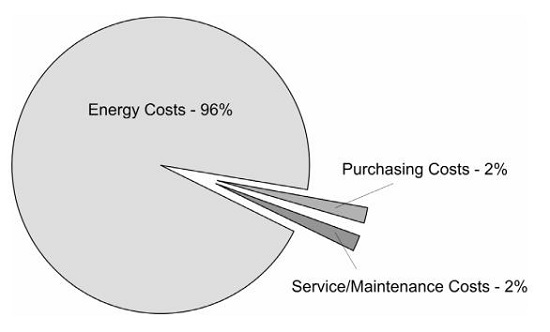 Proper servo motor sizing will not only assure best system performance; it also provides considerable cost savings. The conventional method of servo motor sizing is based on calculations of the system load, which determines the required size of a motor. Standard praxis demands to add a safety factor to the torque requirements in order to cover for additional friction forces that might occur due to the aging of mechanical components. However, the determination of the system load and the selection of the right servo motor can be extremely time consuming. Each motor has its individual rotor inertia, which contributes to the system load torque, since Torque equals Inertia times Acceleration. The calculation of the system torque must be repeated for each motor that is being considered for the application.
Proper servo motor sizing will not only assure best system performance; it also provides considerable cost savings. The conventional method of servo motor sizing is based on calculations of the system load, which determines the required size of a motor. Standard praxis demands to add a safety factor to the torque requirements in order to cover for additional friction forces that might occur due to the aging of mechanical components. However, the determination of the system load and the selection of the right servo motor can be extremely time consuming. Each motor has its individual rotor inertia, which contributes to the system load torque, since Torque equals Inertia times Acceleration. The calculation of the system torque must be repeated for each motor that is being considered for the application.
As a result, it is not an easy task to select the optimum motor for the application considering the vast amount of available servo motors in the marketplace. Many motors, that are currently in action, have been chosen mostly due to the fact that they are larger than required and were available short-term (e.g. from inventory).
The main reasons to oversize a motor are:
Technical Aspects
Oversizing a motor is naturally more common than under sizing. An undersized motor will consequently not be able to move the load adequately (or not at all) and, in extreme cases, may overheat and burn out, especially when it can’t dissipate waste heat fast enough. Larger motors will stay cool, but if they are too large they will waste energy during inefficient operation. After all, the motor sizing process can also be seen as an energy balancing act.
AC motors tend to run hot when they are loaded too heavily or too lightly. Servo motors, either undersized or oversized, will inevitably start to vibrate or encounter stalling problems. One of the major misconceptions during the motion design process is that selecting a larger motor than required is only a small price to pay for the capability to handle the required load, especially since the load may increase during the lifetime of the application due to increased mechanical wear. However, as demonstrated in the picture below, the motor efficiency deteriorates quickly when the motor operates below the designed load.
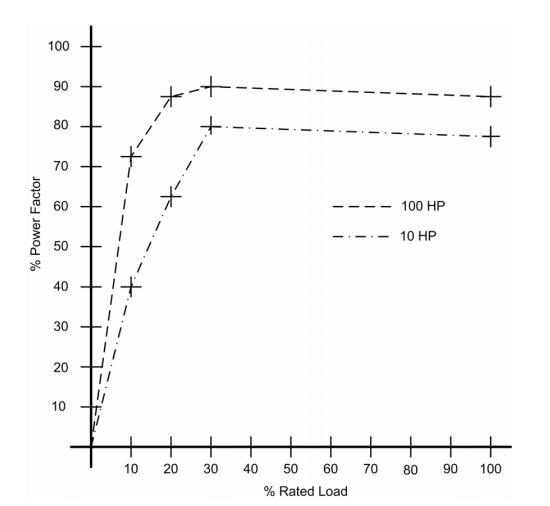 Picture shows an example of two motors, 10 HP and 100 HP. In both cases there is a sharp decline of the motors’ efficiency at around 30% of the rated load.
Picture shows an example of two motors, 10 HP and 100 HP. In both cases there is a sharp decline of the motors’ efficiency at around 30% of the rated load.
However, the curves as shown in the picture, will vary substantially from motor to motor and it is difficult to say when exactly a motor is oversized. As a general rule of thumb, when a motor operates at 40% or less of its rated load, it is a good candidate for downsizing, especially in cases where the load does not vary very much. Servo motor applications usually require short-term operation at higher loads, especially during acceleration and deceleration, which makes it necessary to look at the average (RMS) torque and the peak torque of an application.
There are, however, advantages to oversizing:
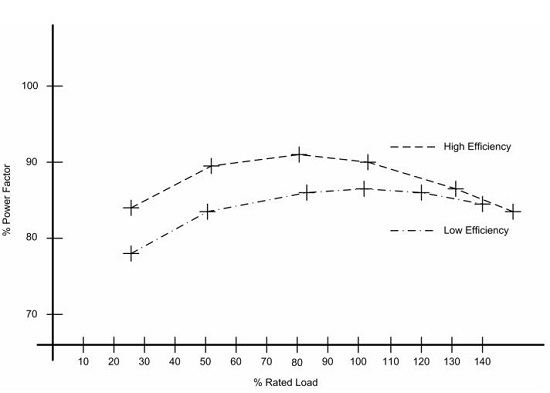 The Objective of Motor Sizing
The Objective of Motor Sizing
The main objective of motor sizing is based on the good old American sense for business: Get the best performance for the lowest price. As we have learned from a previous chapter the lifecycle costs of an electrical motor are:
From a technical standpoint it is also desirable to find a motor whose rotor inertia matches the inertia of the mechanical setup as close as possible, i.e. the optimum ratio between load to rotor inertia of 1 : 1. The inertia match will provide the best performance. However, for servo motors a ratio of up to 6 : 1 still provides a reasonable performance. Any higher ratios will result in instabilities of the system and will eventually lead to total malfunction.
In many cases it makes sense to add a gear between motor and the actual load. A gear lowers the inertia that is reflected to the motor in direct proportion of the transmission ratio. This scenario allows to run smaller motors, however, with the price of the gear added to the system. On the other hand the price reduction by using a smaller motor/drive combination may more than just compensate for the gear’s price.
In review the objective of motor sizing is to:
Importance of Servo Motor Sizing
The servo motor represents the most influential cost factor in the motion control system design, not only during the purchasing process, but especially during operation. A high-torque motor will require a stronger and thus more expensive amplifier than smaller motors. The combination of higher torque motor plus amplifier results not only in higher initial expenses, but will also lead to higher operational costs, in particular increased energy consumption. It is estimated, that the purchase price represents only about 2% of the total life cycle costs; about 96% is electricity.

As a result, it is not an easy task to select the optimum motor for the application considering the vast amount of available servo motors in the marketplace. Many motors, that are currently in action, have been chosen mostly due to the fact that they are larger than required and were available short-term (e.g. from inventory).
The main reasons to oversize a motor are:
- Uncertain load requirements
- Allowance for load increase (e.g. due to aging mechanical components)
- Availability (e.g. inventory)
Technical Aspects
Oversizing a motor is naturally more common than under sizing. An undersized motor will consequently not be able to move the load adequately (or not at all) and, in extreme cases, may overheat and burn out, especially when it can’t dissipate waste heat fast enough. Larger motors will stay cool, but if they are too large they will waste energy during inefficient operation. After all, the motor sizing process can also be seen as an energy balancing act.
AC motors tend to run hot when they are loaded too heavily or too lightly. Servo motors, either undersized or oversized, will inevitably start to vibrate or encounter stalling problems. One of the major misconceptions during the motion design process is that selecting a larger motor than required is only a small price to pay for the capability to handle the required load, especially since the load may increase during the lifetime of the application due to increased mechanical wear. However, as demonstrated in the picture below, the motor efficiency deteriorates quickly when the motor operates below the designed load.

However, the curves as shown in the picture, will vary substantially from motor to motor and it is difficult to say when exactly a motor is oversized. As a general rule of thumb, when a motor operates at 40% or less of its rated load, it is a good candidate for downsizing, especially in cases where the load does not vary very much. Servo motor applications usually require short-term operation at higher loads, especially during acceleration and deceleration, which makes it necessary to look at the average (RMS) torque and the peak torque of an application.
There are, however, advantages to oversizing:
- Mechanical components (e.g. couplings, ball bearings, etc.) may, depending on the environment and quality of service, encounter wear and as a result may produce higher friction forces. Friction forces contribute to the constant torque of a mechanical set up.
- Oversizing may provide additional capacity for future expansions and may eliminate the need to replace the motor.
- Oversized motors can accommodate unanticipated high loads.
- Oversized motors are more likely to start and operate in undervoltage conditions.

The main objective of motor sizing is based on the good old American sense for business: Get the best performance for the lowest price. As we have learned from a previous chapter the lifecycle costs of an electrical motor are:
- Purchasing Costs 2%
- Repair, Service, Maintenance 2%
- Operating Costs (Electricity) 96%
From a technical standpoint it is also desirable to find a motor whose rotor inertia matches the inertia of the mechanical setup as close as possible, i.e. the optimum ratio between load to rotor inertia of 1 : 1. The inertia match will provide the best performance. However, for servo motors a ratio of up to 6 : 1 still provides a reasonable performance. Any higher ratios will result in instabilities of the system and will eventually lead to total malfunction.
In many cases it makes sense to add a gear between motor and the actual load. A gear lowers the inertia that is reflected to the motor in direct proportion of the transmission ratio. This scenario allows to run smaller motors, however, with the price of the gear added to the system. On the other hand the price reduction by using a smaller motor/drive combination may more than just compensate for the gear’s price.
In review the objective of motor sizing is to:
- Get the best performance for the best price
- Match the motor’s torque with the load torque as close as possible
- Match the motor’s inertia with the load inertia as close as possible
- Find a motor that matches or exceeds the required speed
Post a Comment:
You may also like:

Category
Featured Articles
What is a Servo Motor?
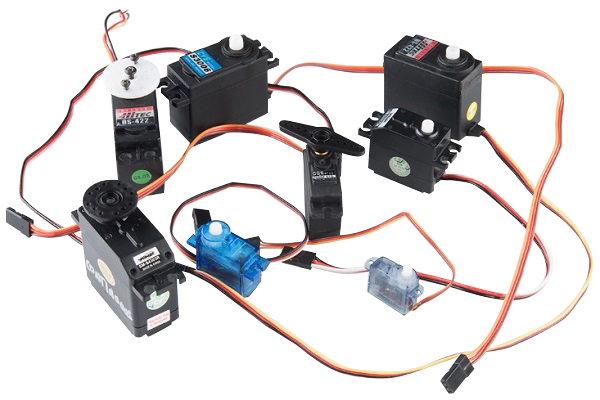 There are some special types of application of electrical motor where rotation of the motor is required for just a certain angle ...
There are some special types of application of electrical motor where rotation of the motor is required for just a certain angle ...
 There are some special types of application of electrical motor where rotation of the motor is required for just a certain angle ...
There are some special types of application of electrical motor where rotation of the motor is required for just a certain angle ...How to Select the Suitable Power ...
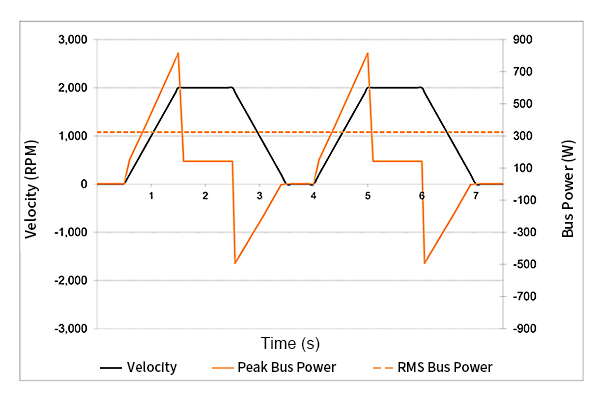 It's important to consider the unique demands of a motion control application when selecting a power supply. During ...
It's important to consider the unique demands of a motion control application when selecting a power supply. During ...
 It's important to consider the unique demands of a motion control application when selecting a power supply. During ...
It's important to consider the unique demands of a motion control application when selecting a power supply. During ...What are the Types of Servo Motor?
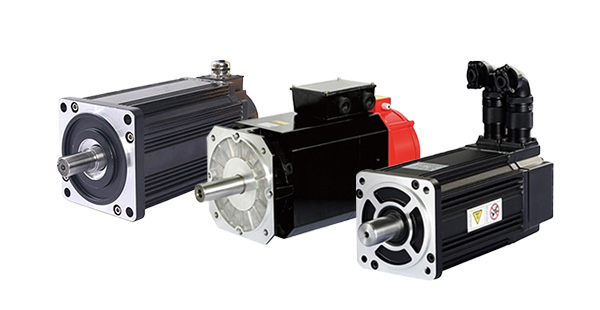 There are some special types of application of electrical motor where rotation of the motor is required for just a certain angle ...
There are some special types of application of electrical motor where rotation of the motor is required for just a certain angle ...
 There are some special types of application of electrical motor where rotation of the motor is required for just a certain angle ...
There are some special types of application of electrical motor where rotation of the motor is required for just a certain angle ...How to Maintain Servo Motor?
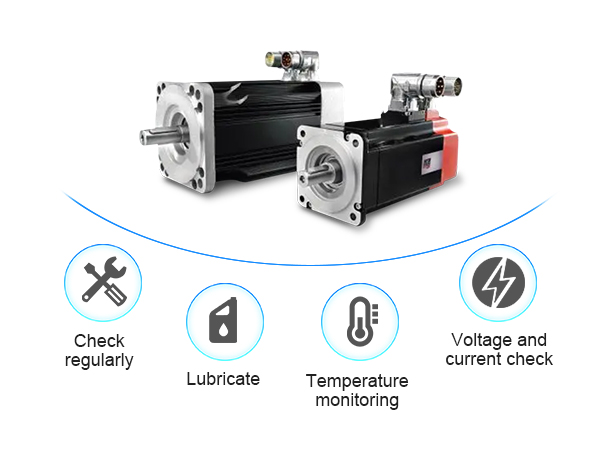 Servo motors play a crucial role in various industries, serving as precision control devices in applications ranging from ...
Servo motors play a crucial role in various industries, serving as precision control devices in applications ranging from ...
 Servo motors play a crucial role in various industries, serving as precision control devices in applications ranging from ...
Servo motors play a crucial role in various industries, serving as precision control devices in applications ranging from ...How to Test Servo Motor?
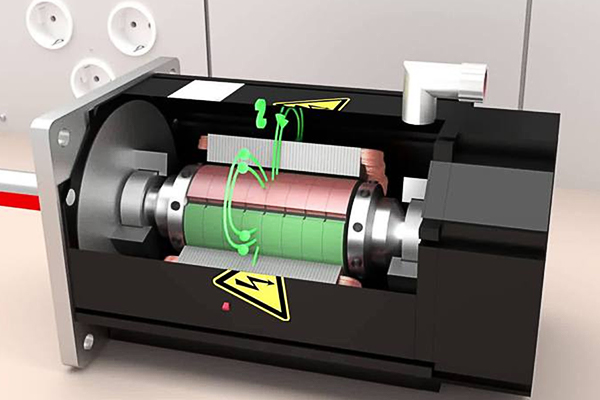 Servo motors are devices that convert electrical signals into mechanical motion and are widely used in industrial automation, ...
Servo motors are devices that convert electrical signals into mechanical motion and are widely used in industrial automation, ...
 Servo motors are devices that convert electrical signals into mechanical motion and are widely used in industrial automation, ...
Servo motors are devices that convert electrical signals into mechanical motion and are widely used in industrial automation, ...